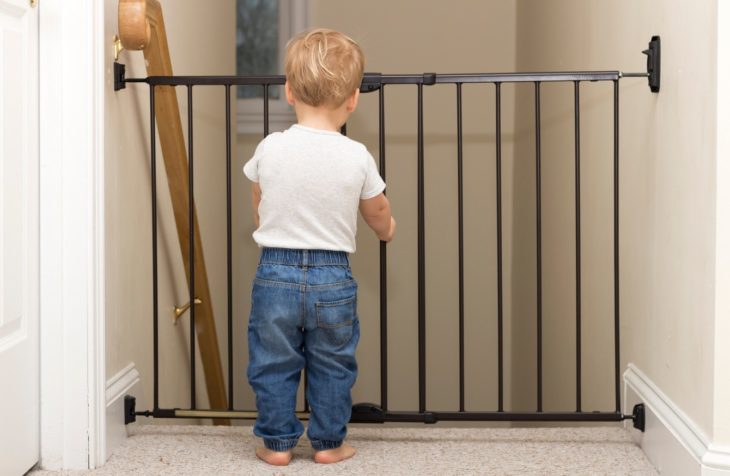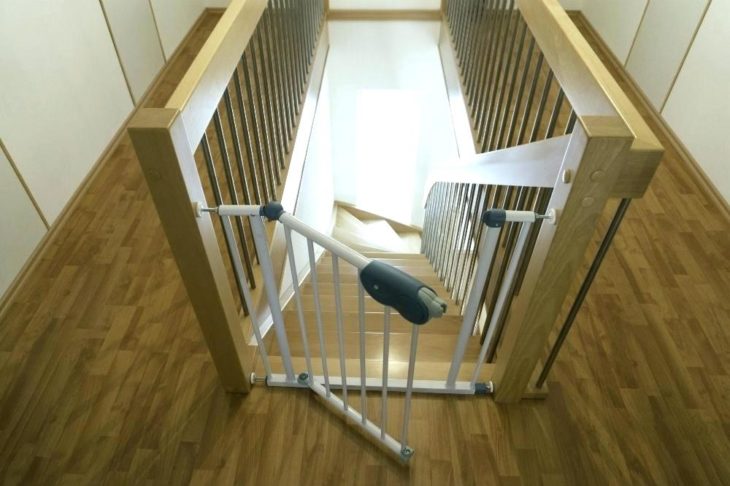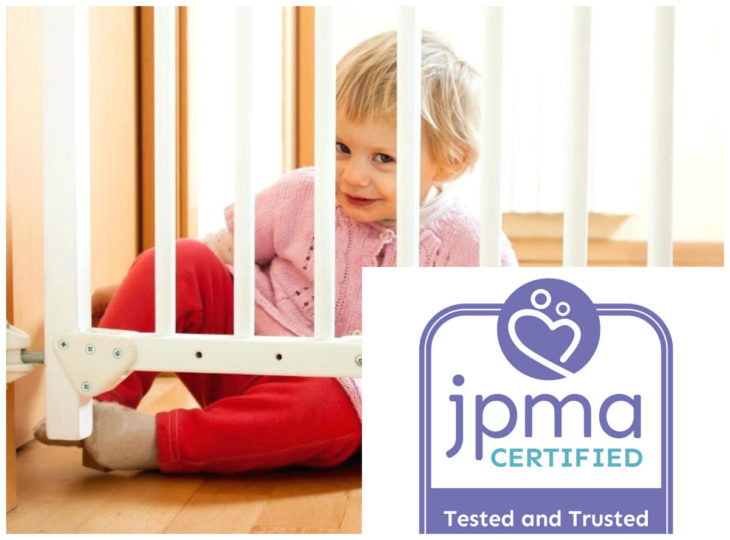Babies grow so fast. One day they are so small, and all they do is sleep; the next day, they are crawling all over the house. You leave them in the living room playing with toys only to find them in the kitchen – this when you realize you need a baby gate.
The best baby gates will restrict areas of your house you consider risky for your baby, including the kitchen, garage, your laundry room, and the stairs. They are also ideal when you need to keep the door to a room open but keep the baby in. The design of your house will determine the number of baby gates you will install. You might need one barrier if all you need to restrict are the stairs, or you can have many gates to restrict different other parts of the house. To ensure the gate serves its purpose, install it before the baby starts to crawl.
This article discusses simple tips on how to pick the right baby safety gates.
Contents
Baby Gate Tip 1: Measure the Opening Properly
Before you go shopping for a baby gate, you need to measure the opening where you will place the gate accordingly. The gate you buy should fit the space well enough not to leave any space where the baby’s head can fit. When shopping, get the gate with precise dimensions to cover the area succinctly. Again, the gate needs to be at least three-quarters the height of your baby – any shorter and the baby might try climbing over.
You will use baby gates from the time your baby is six months to the time they are two years – after that, you can use standard safety gates to restrain your baby.
The gate slat opening of baby safety gates should not exceed 95mm to prevent babies from forcing their heads through. In between the baby gate and the opening, there should be no space where the baby can get trapped. We advise you to check out the best baby gate reviews on sites like NetParents.

Source: TheJournal
Baby Gate Tip 2: Consider the Different Types
You will come across varying types of baby gates. The gate you choose will depend on the design of your home and your baby restraining needs. For instance, you might prefer an extra wide baby gate with a cat door or a hardware mounted baby gate for stairs. Below are the top types of baby safety gates.
Hardware-Mounted
Instead of temporarily having a gate on an opening, hardware-mounted baby gates allow you to have a gate screwed to your wall. The gates are ideal for use at the top or bottom of stairs. Unlike pressure-mounted gates, hardware-mounted gates are safer, seeing as it is not easy for the baby to move them. However, these gates will leave a mark on your walls.
Pressure-Fit
Pressure-fit or pressure-mounted baby gates are held in place by outward pressure towards two opposite walls. If you do not want marks on your walls, these are the ideal types of doors for your house openings. However, some babies might push these gates, making them less secure – as such, avoid using them as baby gates for stairs.
Retractable Baby Gate
A retractable baby gate works the same way a retractable door works. You will need to roll the gates sideways and then clip them to the other side of the opening. When you unclip the gate, it retracts into its pocket. The gates are made of rollout mesh.
Baby Gate for Stairs
The best baby gates for stairs are those designed specifically for stairs. Unlike other gates, stair gates models lack a step-over rail, which can be a tripping hazard. For maximum safety, all gates for stairs are hardware mounted. Even better, they sport a door stopper to ensure they do not swing out over the stairs.
Step-Over Baby Gate
These are short gates ideal for use when your baby is less than a year old. The gates are hands-free with no need for a locking mechanism. Once your baby grows taller, you will need another gate, as this will not restrain them.
Extra-Tall Safety Gate
As earlier mentioned, the right gate should be at least three-quarters of the height of the baby. You will need extra tall gates at the top of the stairs and when your baby grows taller. Extra-tall gates are challenging for the baby to climb over.
Extra-Wide Baby Gate
An extra-wide gate works perfectly for a hallway or an extra-wide opening. Some baby gate models come with add-ons to fit your opening succinctly.

Source: glamourflage
Baby Gate Tip 3: JPMA Certification is Key
Whether you buy a retractable baby gate or an extra wide baby gate, the best baby gate needs to check all safety standards boxes. For starters, ensure that your baby gate is Juvenile Products Manufacturers Association certified. You can also ensure the gate has not been recalled on the Consumer Product Safety Commission (CPSC). Regularly, you need to check the gate for loose parts, peeling paint, and sharp edges.
The locking mechanism of a baby gate needs to be right for you and your baby. Buttons and lift-up locking mechanisms are ideal when the baby is young, but afterward, the baby becomes skilled and might figure out how to unlock the gate. As the baby grows up, you need to upgrade with a baby-proof safety lock.

Source: myclothing, jpma
Baby-Gate Tip 4: Avoid Accordion-Style Baby Gates
Accordion-style baby gates were recalled for safety concerns. These gates feature v-shaped gaps at the sides and the top where babies can be strangled or trapped. Instead of these styles, choose any other type described above.
Conclusion
Much as a baby gate will help restrain the baby, it is not a substitute for you watching on your baby. At all times, the baby should not be left unattended. If you use a baby gate on an area, you repeatedly use, ensure that the gate swings with ease. Again, avoid buying used baby gates as they may not be sturdy enough to keep your baby restrained.
